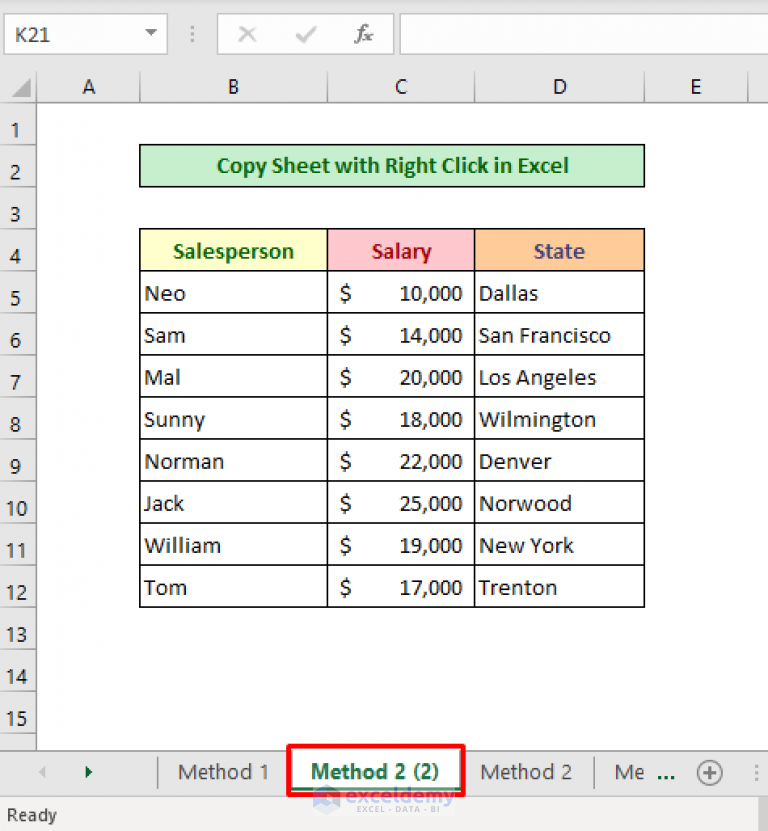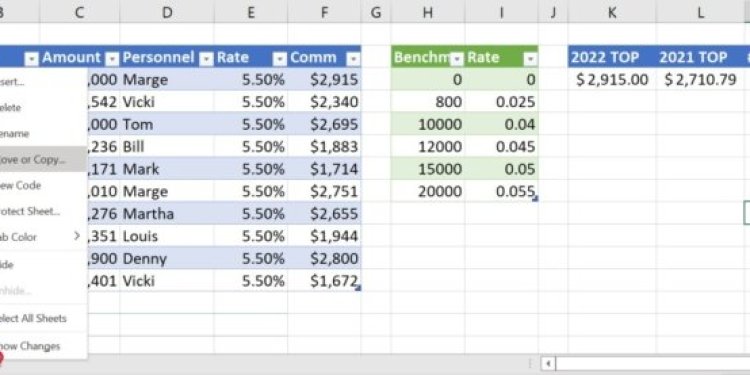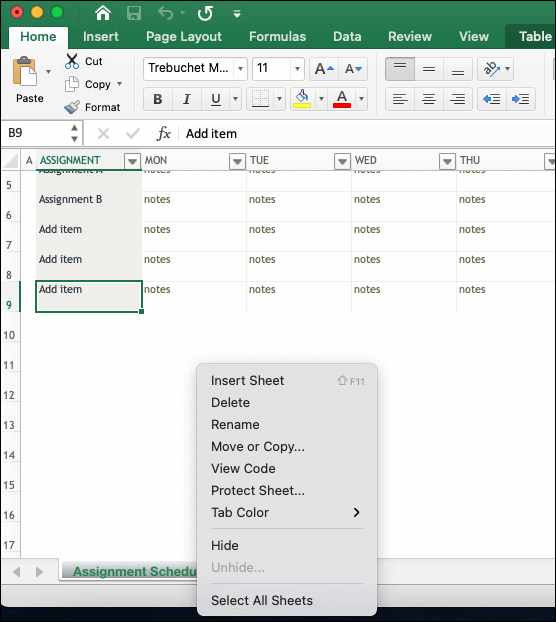5 Easy Steps to Copy an Excel Sheet

Microsoft Excel is a powerful tool used by individuals, businesses, and organizations to manage, analyze, and present data effectively. One of the common tasks that users might perform regularly is copying an Excel sheet from one workbook to another or within the same workbook. Here are five easy steps to accomplish this task with both simplicity and efficiency in mind:
Step 1: Select the Sheet You Wish to Copy

Begin by opening the workbook that contains the sheet you wish to copy. You will see a list of tabs at the bottom of the Excel window, each representing a different worksheet. Click on the tab of the sheet you want to copy.
🔍 Note: If the sheet you want to copy isn’t in view, use the left or right arrow buttons on the workbook’s left to scroll through the tabs.
Step 2: Use the Right-Click Context Menu

With your sheet selected, right-click on its tab. A context menu will appear, offering several options for managing your sheets.
- Move or Copy…
- Insert…
- Delete
- Rename
- Sheet Color
- Hide
- View Code
Step 3: Navigate to “Move or Copy”

From the context menu, select “Move or Copy…”. This will open a dialog box titled “Move or Copy”.
Step 4: Choose the Destination

In this dialog box, you have several options:
- Choose a workbook to which you want to move or copy the sheet. This can be either the current open workbook or a different one.
- If you’re copying to a new workbook, select “(new book)” from the list.
- Check or uncheck the box “Create a copy” to either create a duplicate sheet or move the original.
- If copying within the same workbook, use the arrow keys to arrange where the sheet will be inserted.
Step 5: Finalize the Copy

After making your selections, click “OK”. Excel will then either move or copy the sheet to your chosen location. If you chose to create a copy, the original sheet will remain where it was, and a new copy will appear.
🔑 Note: Be cautious not to overwrite existing sheets when copying. If a sheet with the same name already exists in the destination workbook, Excel will prompt you to rename the copied sheet.
These steps provide a quick and reliable way to duplicate Excel sheets, which can save you considerable time when working with complex datasets or when you need to distribute reports or datasets across multiple workbooks. It's essential to understand that copying sheets also replicates all data, formatting, and formulas, so make sure you are aware of any links or external references that might be broken when sheets are copied.
When using Excel for productivity, understanding and mastering these fundamental tasks can significantly improve your workflow. Regularly duplicating sheets for backups, creating templates, or distributing information can be seamlessly integrated into your daily routine with just a few clicks.
Can I copy multiple sheets at once?

+
Yes, you can copy multiple sheets simultaneously. Hold down the Ctrl key and click on the tabs of the sheets you wish to copy. Then, right-click on one of the selected tabs and proceed with the steps for copying.
Will copying a sheet in Excel also copy macros?

+
Copying a sheet within the same workbook will generally copy macros as well, but when copying to a new workbook, macros are not automatically copied. You’ll need to export and import VBA modules separately.
Is it possible to copy only the formatting of a sheet?

+
While Excel doesn’t directly support copying only formatting across sheets, you can use the Format Painter or set up a template sheet with the desired formatting and copy that.
Can I copy conditional formatting when copying sheets?

+
Yes, conditional formatting rules are copied along with the sheet. Make sure the rules are set up in the way you need them in the destination workbook, as references might change.